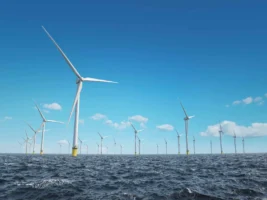Fresh on the heels of its $10 billion Ecomagination investment into large-scale natural gas energy technologies, General Electric has announced a $1.4 billion, four-year plan to push into a new natural gas frontier: distributed power.
That’s the name that GE has given to its new business unit, aimed at creating new on-site power systems for a global customer base. It’s also released a white paper, “The Rise of Distributed Power,” that lays out the business case for a new approach to engineering, financing and maintaining a fleet of distributed, gas-fired gear.
GE’s announcement, made in the Indonesian capitol city of Jakarta, seems aimed primarily at parts of the world that lack grid electricity. Lorraine Bolsinger, president and CEO of the Distributed Power business unit, noted in Tuesday’s release that more than 1.3 billion people around the world don’t have access to reliable power today.
But as GE’s white paper notes, the distributed power revolution is overtaking industrialized countries as well as developing ones. Solar PV, which has beengrowing by leaps and bounds, represents the green power side of this equation, and Greentech Media has been closely watching the ways in which this exponential growth has been disrupting traditional energy utility business models and planning paradigms.
At the same time, solar PV is only a small, if growing, portion of this distributed generation landscape, as we’ve noted in recent coverage. Combined heat and power (CHP) systems that provide heat, cooling and electricity to university and government campuses and corporate facilities are a significant part of that total. And small-scale generators, whether they’re meant for emergency backup power, or for running most or all of the time to power island communities and neighborhoods and facilities in parts of the world where the grid can’t be relied upon, make up an even larger share.
Most of those smaller generators are diesel-fueled, which makes for a noisy, polluting and expensive way to keep the lights on. At the same time, the cost of cleaner alternatives has continued to drop, and combining intermittentdistributed power like solar and wind with dispatchable resources like energy storage, fuel cells, or even fossil fuel-fired generators, is becoming more economically viable.
GE defines “distributed” power as anything under 50 megawatts, a category that stretches from basement or garage backup gen-sets to large-scale gas turbines or CHP systems. The key difference to be drawn, GE’s white paper notes, is between “distributed” generation and “central” generation — the big utility-scale power plants that require long-term capital financing and project planning to bring on-line.
In simple terms, in a world where overall energy demand growth is slowing, new transmission lines are harder to build, and renewable solar and wind power are making up the majority of new generation investment, it’s becoming increasingly difficult to justify central generation’s outsized costs and timelines to development against distributed alternatives.
That concept is backed up by GE’s statistics and projections on the mix of central vs. distributed generation investment around the world. According to the white paper, $150 billion was invested in distributed power technologies in 2012, or about 142 gigawatts, compared to 218 gigawatts of central power capacity.
By 2020, GE projects the share of distributed power will grow to $206 billion to reach 200 gigawatts, representing an annual growth rate of 4.4 percent. That will actually outpace projected annual growth rate of 3.3 percent in global electricity consumption.

In other words, distributed generation could displace central generation, not just augment it, over the rest of the decade. GE isn’t envisioning a grid-disconnected world, however, but rather a grid-integrated distributed energy landscape. According to its white paper, “The forthcoming marriage of the internet and industrial machines promises to transform isolated distributed power technologies into remotely operated and synchronized fleets of virtual power plants.”
GE, along with the rest of its international grid competitors, is delving into theeconomic potential of microgrids and virtual power plants to help manage these new grid-integrated distributed energy resources. We’re seeing an increased focus on managing the mix of customer-owned distributed energy resources, power management systems, energy storage devices and other grid edge systems as discrete units, to help integrate them into the way utilities manage their grids and generate and deliver energy.
Finally, while GE’s white paper does cite wind power and solar power as distributed resources in its mix, it’s pretty clear that it’s looking to natural gas to be the primary fuel of this distributed energy revolution. That may not sit well with renewable energy advocates, but it’s bound to be better than burning diesel to power communities and essential services in markets from China and India to Mexico and Egypt where GE’s white paper cites a big market potential for self-generated power.
Source: GreenTech Grid. Reproduced with permission.










